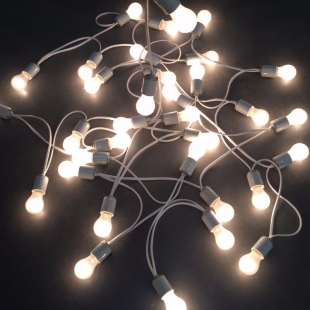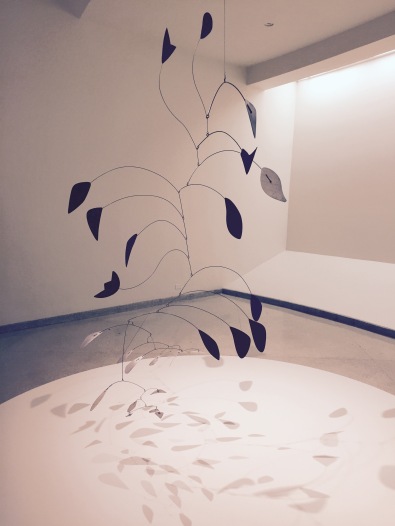Here light is the artist’s sole medium of expression.
He must mould it by optical means,
almost as a sculpture models clay.
He must add color, and finally motion to his creation.
Motion, the time dimension, demands that he must
be a choreographer in space.
~Thomas Wilfred
How do you play light? How do you change noise, which is not-matter, into light, which is not-matter, and come away with an experience, which certainly matters?
In the charcoal grey, cave-like gallery space, ghostly, glowing forms draw you toward them. How can a form without mass have such gravity?
Part lava lamp, part screen saver, part soul trapped in a simple frame – the screens are opuses. This one, Counterpoint in Space, Op. 146 is an eternal smokey vapor trapped in a box. It ‘s like watching a sunrise through a puff of vape smoke: sweet and ghostly and just a little off-putting if you get too close. It is an always-shifting, rose-green, meditative viewing experience.
Throughout the exhibition there is a contrast of weightless, noiseless, changing color-forms, with the heavy wooden boxes that ground them, frame them, and ultimately allow them to exist. Here, a cage is a life source.
Track the light, follow the smoke. This is the world of a busy, multitasking mind – a dream-place built by a conductor of light. This is proof that light can be bent and moved and taught to behave, though it remains unburdened by its task.
At first glance there is stillness, then a gentle, bleeding, lazily drifting spread of brightness.
Wilfred believed that imagination was a concept, and that reality was the physical equipment which made it possible. The artist’s role is to make people believe that what they see on screen is actually a window; that the world of light and color and emotion and form captured in brief is all around us.
It’s all about laying back and finding shapes in the clouds.
Lumia: Thomas Wilfred and the Art of Light is on view at the Smithsonian American Art Museum in Washington DC until January 7, 2018.


